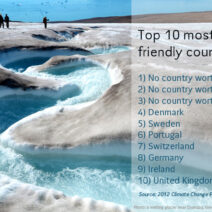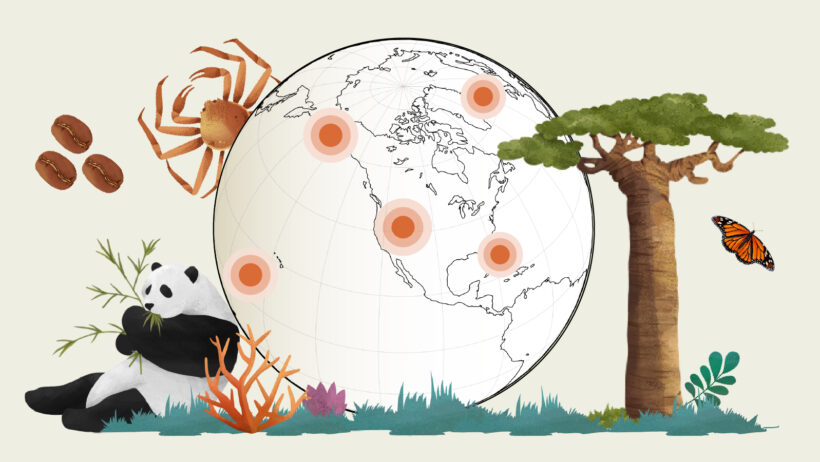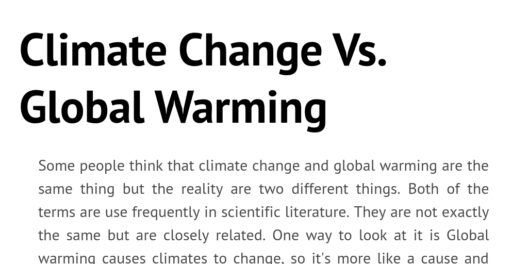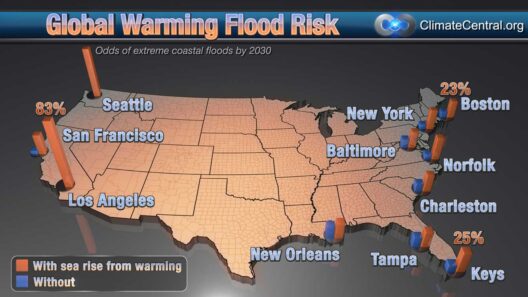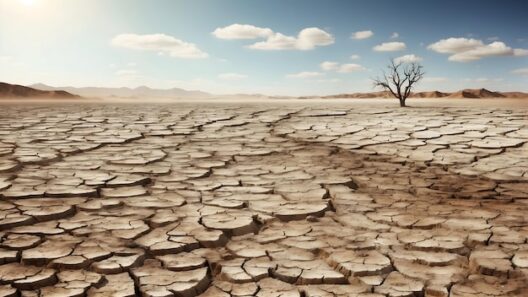Global warming is an overarching crisis threatening not just ecosystems, but entire nations. The nuanced interplay between climate change and geographical vulnerabilities raises pressing concerns: Are entire countries indeed disappearing because of global warming? In exploring this complex issue, it is imperative to understand the mechanisms of climate change, its impact on sea levels, and the socio-political ramifications for nations on the brink of obliteration.
At the crux of the climate crisis, anthropogenic emissions have significantly accelerated the greenhouse effect. This phenomenon traps excessive heat within the Earth’s atmosphere, culminating in rising temperatures. The consequences manifest not only in increased global temperatures but also in altered precipitation patterns and intensified weather events. Such changes have cascading effects on both natural and human systems, fundamentally influencing the viability of several low-lying nations.
One of the most alarming consequences of global warming is the unprecedented rise in sea levels. Scientific projections estimate that sea levels could rise by as much as two meters by the year 2100, if not more, depending on the trajectory of CO2 emissions. This grim forecast has dire implications for coastal nations and islands, particularly those in the Pacific and Indian Oceans. Countries such as the Maldives, Tuvalu, and Kiribati are emblematic of this existential threat. These nations, characterized by their flat topography, find themselves increasingly vulnerable, with predictions indicating that some could entirely submerge within decades.
As glacial and polar ice caps melt at an alarming rate, not only does this contribute to rising sea levels, but it also disrupts freshwater supplies, leading to a dual crisis of water scarcity and habitat loss. The thermal expansion of water due to increasing temperatures exacerbates the situation further. This combination of factors creates a cascade of environmental disasters that severely threaten the livelihoods of millions. In the Pacific Islands, for example, the traditional ways of life are compromised as saltwater intrusion affects agriculture and drinking water resources.
The socio-economic ramifications of such environmental degradation are profound. Displacement becomes an inevitable reality for populations in affected regions. Individuals in these countries face the prospect of becoming climate refugees—people forced to leave their homes due to climate-related impacts. The intermingling of migration, security, and climate adaptation necessitates urgent global discourse. Countries that are equipped with resources may grapple with an influx of displaced individuals, while those already facing economic strife become further strained, leading to potential conflicts.
The law and geopolitics surrounding climate refugees remain uncharted territory. The 1951 Refugee Convention does not address those displaced by climate change, and thus, the current legal frameworks often leave these vulnerable populations in limbo. Nations such as Fiji or the Solomon Islands are grappling with the ambiguous status of their own citizens—whether to advocate for resettlement or fight to retain their cultural identities against the encroaching tides. Such dilemmas spotlight the need for international cooperation and robust policy frameworks that recognize and address the plight of climate refugees.
Furthermore, the phenomenon of “sinking countries” extends beyond mere geographic disappearance. It also encapsulates the evaporation of rich cultural heritages and traditional wisdom forged over centuries. As islands succumb to rising waters, the loss is irrevocable—not just in terms of land but also in terms of unique identities and historical narratives. This lends urgency to the need for global recognition of the cultural impacts of climate change.
In response to these escalating threats, there is a growing movement for climate adaptation and resilience-building. Nations facing such existential threats advocate for international support in capacity-building initiatives. Climate financing becomes critical in fostering renewable energy infrastructures, sustainable agricultural practices, and effective disaster management systems. Enhanced cooperation amongst nations can not only address immediate needs but also facilitate long-term resilience strategies that allow vulnerable nations to adapt, rather than abandon their homelands.
Moreover, innovation in technology has pivotal roles to play. From sea walls to floating cities, creative engineering solutions can help fortify coastal nations against the relentless march of the sea. Sustainability initiatives, particularly in urban planning and agriculture, enable communities to withstand climatic stressors while preserving their cultural integrity and ecological sanctity.
Education also cannot be overlooked in this discourse. Knowledge dissemination surrounding climate change is essential for empowering communities. Awareness programs addressing environmental stewardship can galvanize collective action. When citizens are informed about the implications of their choices on the climate, they become more inclined to engage in proactive measures—such as advocating for sustainable local policies and practices.
The discussion surrounding countries disappearing due to global warming is layered and multifaceted, encompassing environmental, cultural, economic, and political dimensions. The stakes are alarmingly high; as nations teeter on the precipice of obliteration, the world must mobilize for comprehensive solutions. Collective stewardship, embracing sustainability, and equitable climate adaptation will be tantamount to navigating the choppy waters of an uncertain future. We are at a pivotal juncture, where fostering global unity and responsibility may become the lifebuoy for those at risk of losing everything to the merciless tides of climate change.
